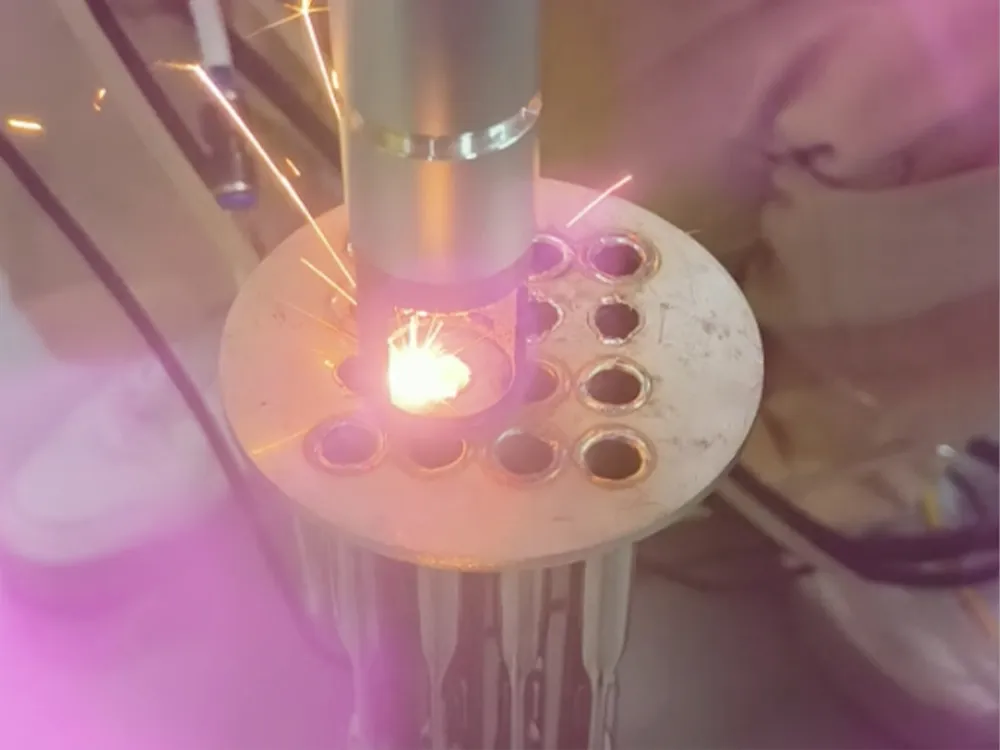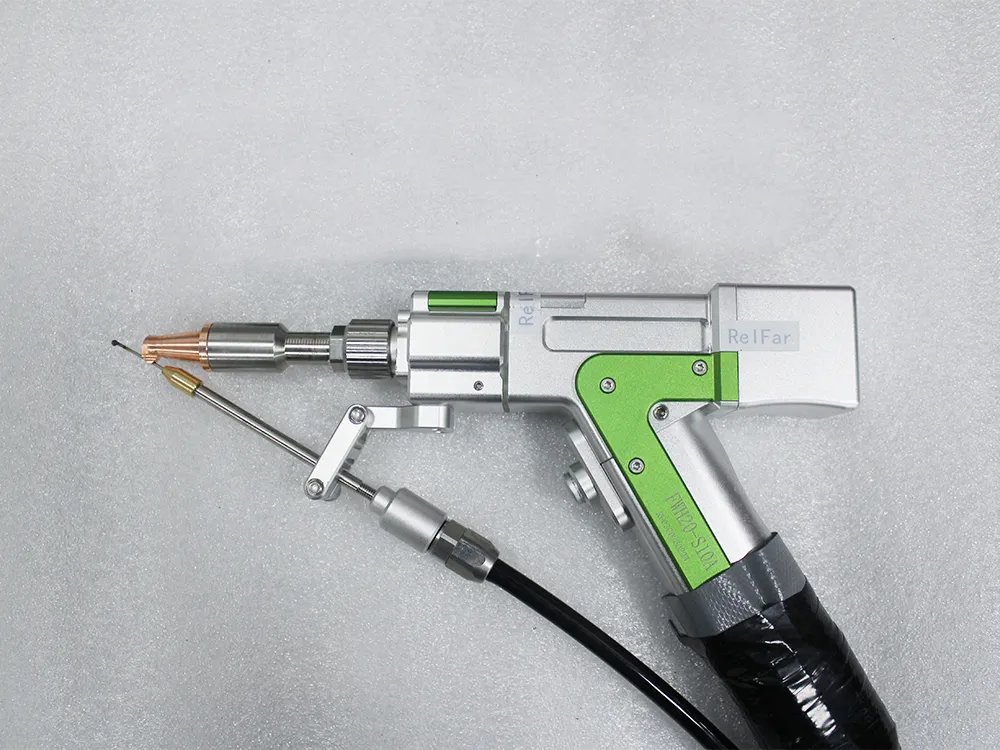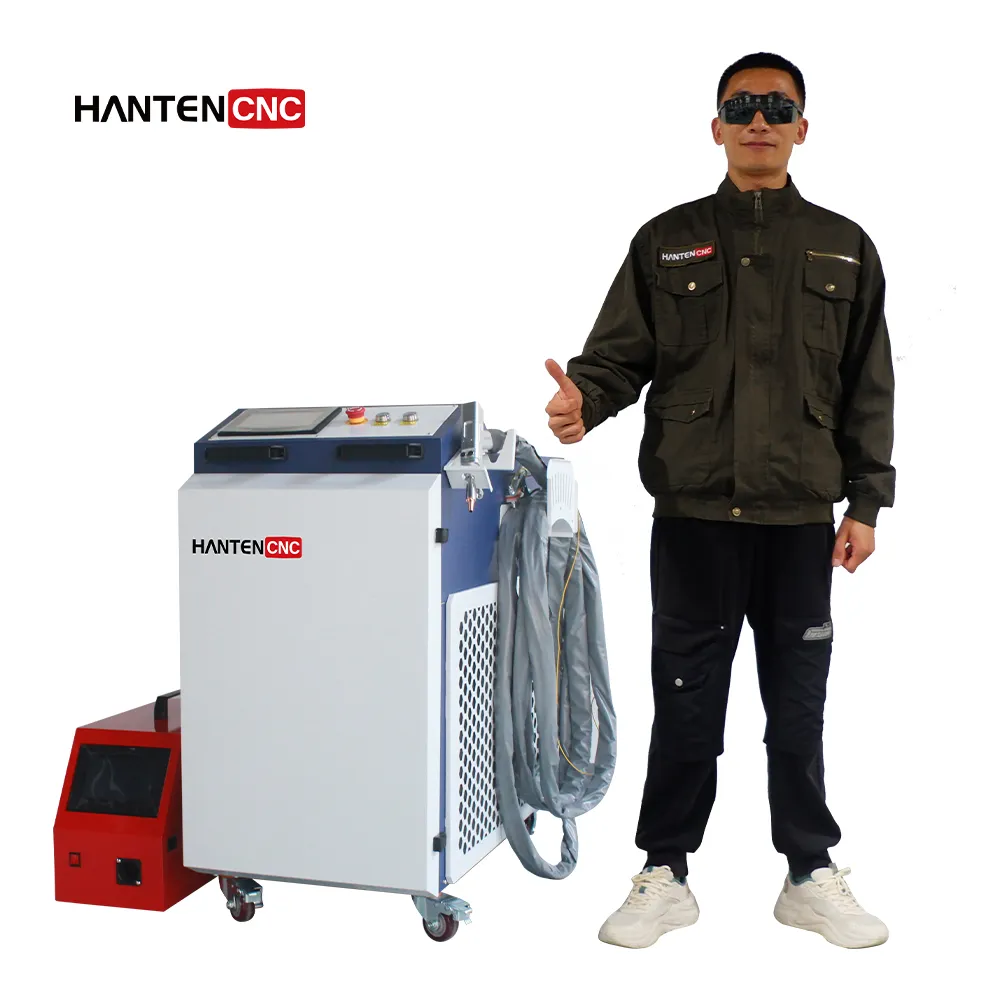Normally, you can not use the same welding styles for all the applications. Some applications need more strength, while some need precision. Some have thin walls, while some have a very complex shape. So, the type of laser welding must be different for different applications.
You may be looking for a suitable type of laser welding for your work. However, you might not be familiar with different types of them. If so, you have reached the right destination. This article provides a concise overview of 10 laser welding techniques.
Most people around the world heavily rely on these techniques. Each laser welding method serves in its specialized field for a better outcome. Their use is skyrocketing in many fields, from medical and the military to jewelry and other sectors.
The welding process is almost the same for all the techniques. However, the strategy of making a weld seam could be different. A focused laser beam helps join metals in the process. The method is not just limited to metals; you can also deal with thermoplastics.

10 Popular Types of Laser Welding Techniques
Choosing the right one matters among the various techniques and methods of laser welding. The following 10 are the most popular types of laser welding techniques.
Type #1 – Fiber Laser Welding
Fiber laser welding is one of the most used welding methods, and it is known for its high power and efficiency. It uses a fiber optic cable to transmit energy; thus, the name fiber laser.
The fiber laser wavelength is ideal for penetrating metals. On the other hand, the CO2 laser wavelength is much broader, which requires much energy to penetrate through metals. Besides, they produce a wide HAZ area. This type of laser welding is ideal for thermoplastics.
Fiber laser welding offers clean and rapid welding results for metal parts. It is an energy-efficient process and requires less maintenance. Although this method is initially expensive, it claims perfect metal alignment.
Fiber laser welding is widely used in the automotive, aerospace, and electronics industries. People widely use it to make gear, lightweight frames, auto parts, engine components, and various connectors.

Type #2 – Keyhole laser Welding
The name keyhole laser welding typically comes from its welding nature. The keyhole usually allows you to penetrate the material and create a perfect seam weld. This technique offers high strength and durability.
Keyhole laser welding generally uses higher-power laser systems. The best part is that the process only takes a single pass. Most technicians and manufacturers prefer this technique for thick metal welding.
Keyhole welding is not suitable for thin materials and needs proper control. Otherwise, keyhole failure can trap gas, causing gaps, and ultimately, you won’t get the desired outcome. Aerospace, shipbuilding, and heavy machinery industries commonly utilize this welding method.
Type #3 – Heat Conduction Welding
The heat conduction method usually melts the surface where the two corners join together. The best example could be the corner welds of a device enclosure. This kind of laser welding works great for joining objects with thin walls.
The heat conduction laser welding method typically uses low-power laser sources. This makes it flexible and easy to control.
The method typically reduces warping and produces a smooth finish due to the use of a low-power laser. Besides, it requires less post-processing work.
This laser welding method may fail on thick materials because the mating joint is too weak for heavy applications. Also, it needs a clear surface for quality welding.
Type #4 – Remote Laser Welding (RLW)
Remote Laser welding is another name for scanning laser welding. It is also a contactless process that operates on the workpiece via scanning or a robot arm. Since there is no manual operation, the weld quality is very high. This highly controlled and precise method makes it suitable for complex layouts and mass production.
This method is widely popular for high-speed and automation work. It offers high productivity, especially for large-scale productions.
The system is costly and requires maintenance expenses. An advanced control system and scanners are needed in this process, which might incur extra costs. Additionally, establishing a consistent result is quite challenging. This method has a huge application in various industries. Battery manufacturing, repetitive welding, and car panel production heavily depend on it.
Type #5 – Hybrid Laser Welding
This laser welding system works simultaneously with laser welding and arc welding. Both of these techniques are used to create a strong, efficient, and precise weld. The combination of these two methods typically benefits the heavy-duty welding tasks.
Besides these advantages, it has a few limitations. The combination of both laser and arc technology can increase the overall ownership cost. Besides, this laser welding method is also not suitable for thin materials. However, it outperforms the uses in heavy constructions, shipbuilding frames, and chassis welding.
Type #6 – Pulsed Laser Welding
The pulse laser technique is much more efficient than other methods. This method sends short energy pulses to the base materials. The term “short burst” means that the laser source doesn’t deliver the laser continuously. It stops for a specific time and then rereleases the laser. Each of these stopping times is called a pulse. Thus, the name of this laser welding technique is Pulsed laser welding.
Pulse laser welding is a much safer option. You can use it for welding work of very thin to medium thickness. This type of laser welding is perfect for soft and sensitive materials. On top of that, it provides efficiency, cost-effectiveness, and precision.
It may not be ideal for extensive area welding. You might opt for the continuous laser welding method for this type of work.
Type #7 – Beam Oscillating Laser Welding
In this method, the laser beam operates on a material while moving in an oscillating pattern. Their patterns may be circular, linear, or spiral. The method relies on a rapid deflection system and distributes heat for stability.
It makes welds stronger, prevents common flaws, and makes items more flexible. It has a few limitations, too. This laser beam welding might not be as fast as remote or pulsed laser welding. The setup for this method is typically complex, which might require professional hands. However, BOLW is ideal for welding aluminum, batteries, and dissimilar metals for better results.
Type #8 – Laser Brazing
Laser brazing is also a common technique for joining metals under the thermal joining category. This method heats and melts the filler material only. It doesn’t meet the mating surfaces. Once the filler material is melted, it reaches the mating surface of two metal parts. Once cooled, it creates a strong and smooth weld seam.
The best part of this method is its safety and high-quality finish. The method typically reduces the risks of warping. Besides, this method is comparatively quicker. This type of laser welding is highly suitable for automotive, HVAC systems, and electronics sectors..
Type #9 – Laser Micro Welding
Laser micro-welding is also a popular technique for joining small and delicate components. The size of the weld seam typically ranges from microns to millimeters. The process uses low power and short bursts of energy.
It is a high-precision technique with small welds and clean work. Generally, the method is popular for complex assemblies in tight spaces.
However, the process restricts its application to only small parts and has material limitations. Additionally, it requires an advanced system to function perfectly.
This method creates sensors, electronics, jewelry, and other components. Overall, it is a reliable process for generating small components.
Type #10 – Vacuum Laser Welding
This welding technique is a specialized method that occurs in a vacuum environment. It uses a powerful laser beam on the workpiece in a gas—and air-free chamber. These circumstances help to create oxidation-free welding, which is excellent for reactive metals.
It uses higher power that allows deeper, stronger, and durable welding. However, creating this vacuum system is costly, less speedy, and has low capacity. The method also requires perfect settings. It helps to make equipment for aerospace and high-purity applications.
Which Type of Laser Welding Technique Should You Choose?
Choosing the correct method for your welding job is not tricky. All you need to consider are a few factors. The most important things you must consider are material types, quality, joint type, production volume, and speed. Taking these factors into account will help you make the right choice.
You can consider the keyholes or hybrid laser welding types for deep welding. Both methods are widely popular in aerospace and shipbuilding. You can also use these methods for heavy-duty applications.
You can use the heat conduction welding method to join two mating surfaces.
You can choose the pulse laser welding technique for all types of general-purpose welding.
The micro welding method is needed to work on tiny items. On the other hand, laser brazing is a much quicker method. It can be used for low-strength welding works.
Remote laser welding can be used for automated and precision jobs. It’s a high-control process that offers efficiency and precision during welding.
Beam oscillation, called “wobble welding,” is a safe way to join dissimilar metals. By using this method, you can easily achieve favorable results. Its stability and heat propagation are the main reasons for this.
Finally, vacuum laser welding is crucial in creating sensitive items. This method is ideal for the aerospace, high-purity, and scientific experiment sectors.

Final words
This article describes 10 types of laser welding methods in detail. For optimal results, understand your welding requirements. Thereafter, start the process using the appropriate laser welding process mentioned above. In this way, you can get the desired welding result easily. Hopefully, this information will help you and meet your needs. If you need further information or have any questions, please get in touch with us.
